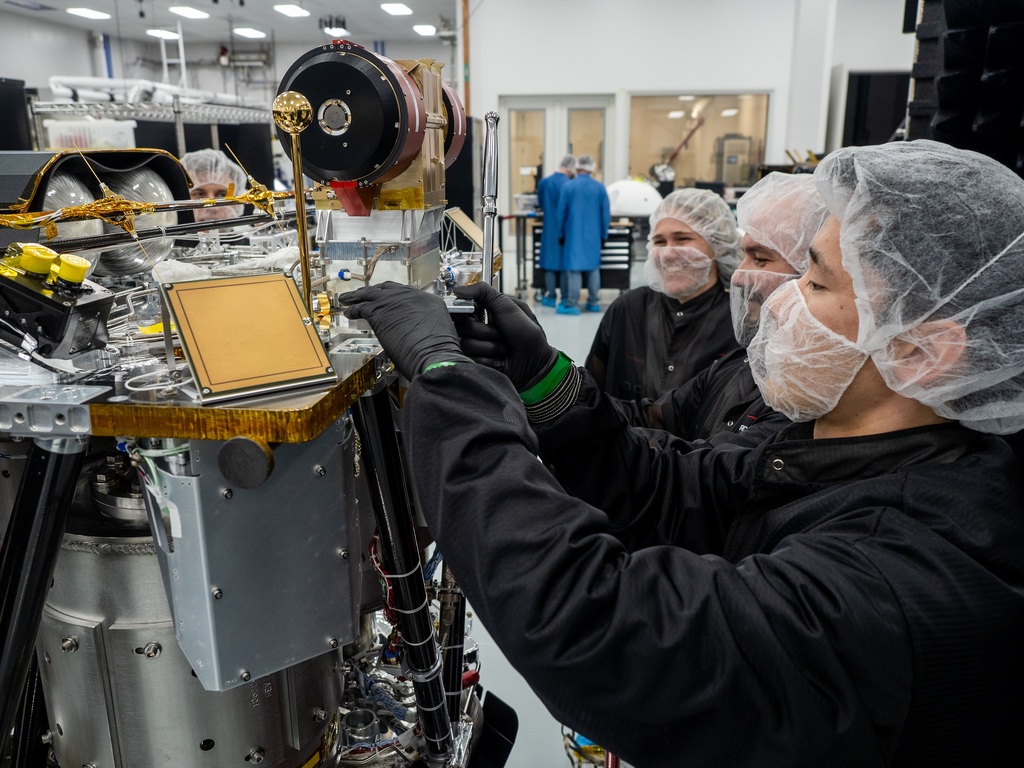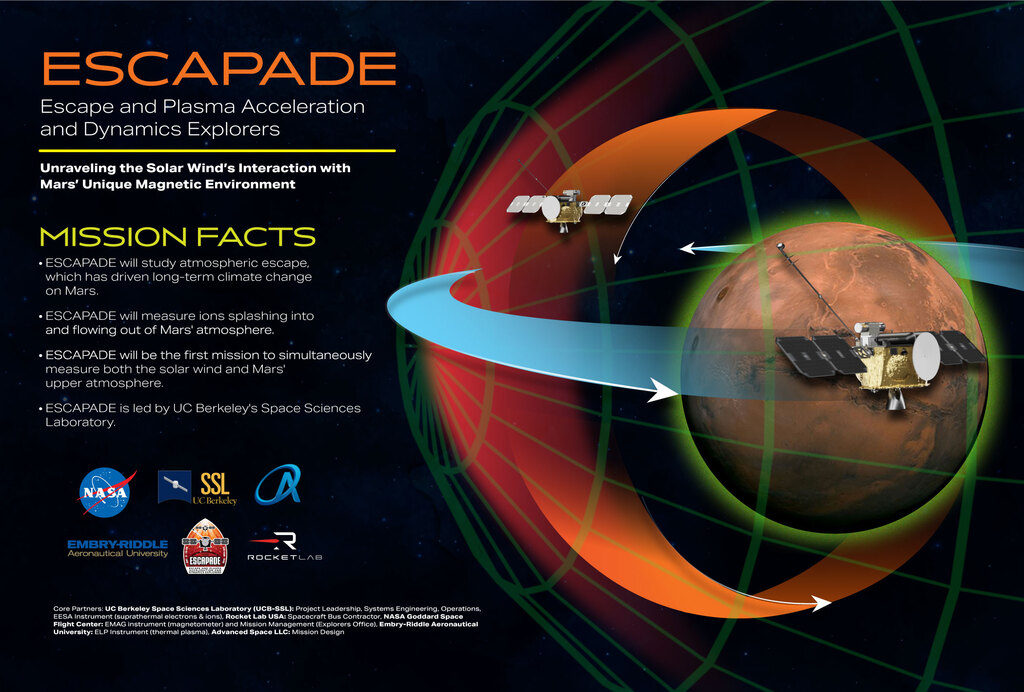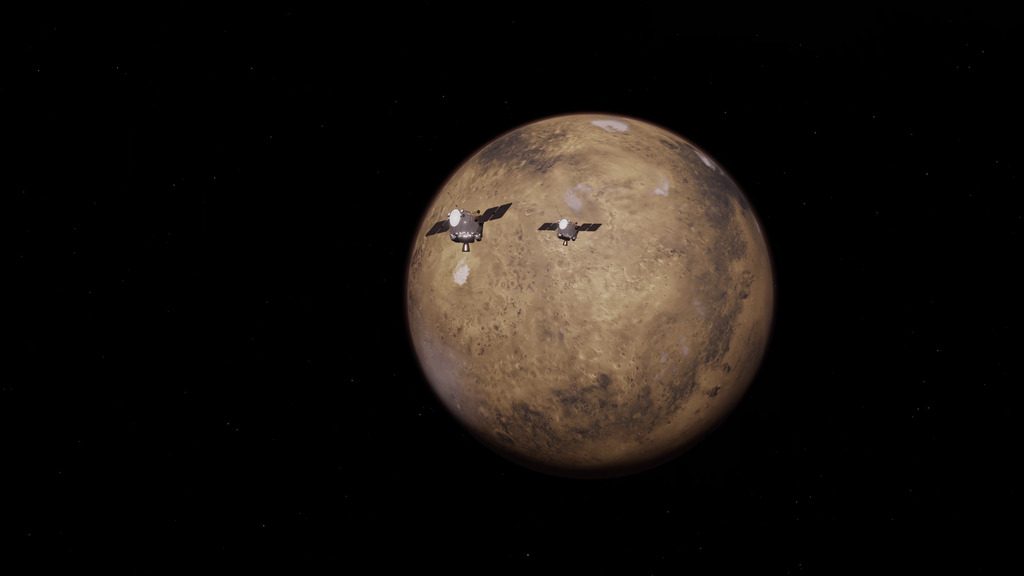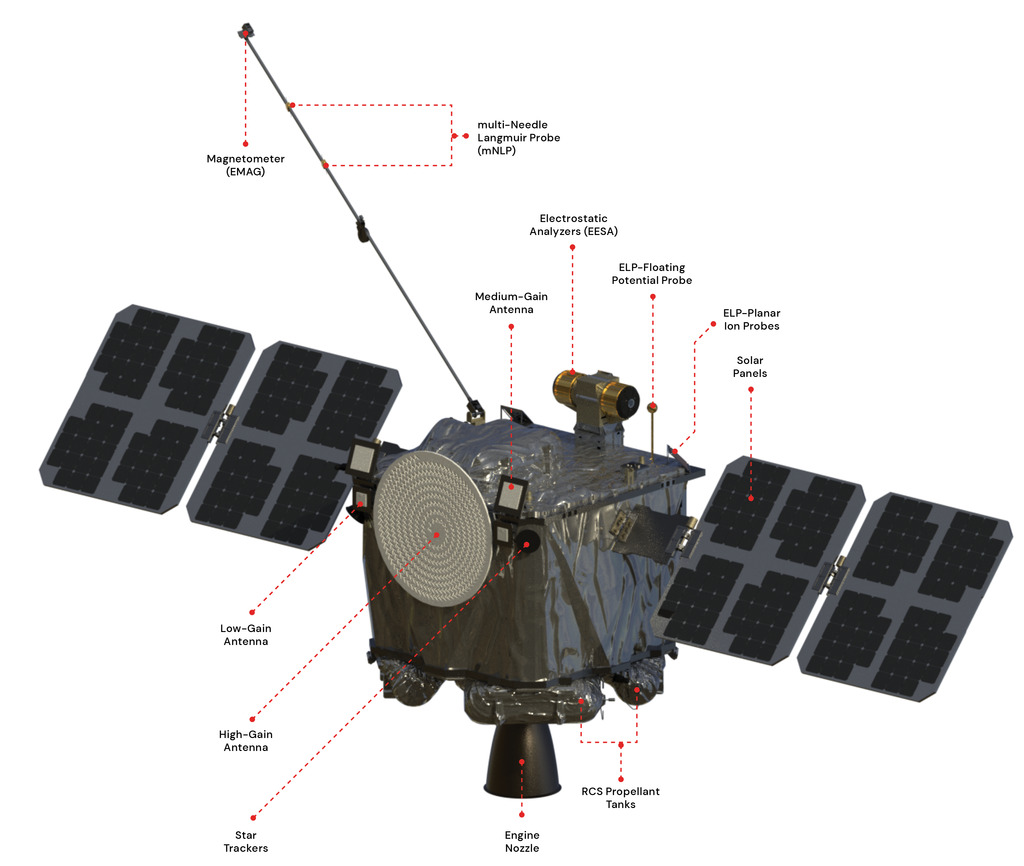A newer version of this visualization is available.
ESCAPADE Launch Phase and Deployment
The Escape and Plasma Acceleration and Dynamics Explorers, or ESCAPADE, will use two identical spacecraft to investigate how the solar wind interacts with Mars’ magnetic environment and how this interaction drives the planet’s atmospheric escape. The first multi-spacecraft orbital science mission to the Red Planet, ESCAPADE’s twin orbiters will take simultaneous observations from different locations around Mars to reveal the planet’s real-time response to space weather and how the Martian magnetosphere changes over time.
ESCAPADE is the payload for the inaugural launch of Blue Origin’s New Glenn rocket, named after John Glenn, the first American astronaut to orbit Earth. New Glenn is a single-configuration, heavy-lift orbital launch vehicle capable of routinely carrying both spacecraft and people to low-Earth orbits, geostationary transfer orbits, cislunar orbits (between the Earth and Moon), and beyond via Earth-departure orbits like the one required for ESCAPADE.
The ESCAPADE mission is managed by the Space Sciences Laboratory at the University of California, Berkeley, with key partners Rocket Lab, NASA's Goddard Space Flight Center, Embry-Riddle Aeronautical University, Advanced Space LLC, and Blue Origin.
New Glenn’s second stage and payload fairing.
Credit: Blue Origin
New Glenn lifts off from Launch Complex 36 in Cape Canaveral, Florida. The vehicle stands over 320-feet tall and is powered by seven BE-4 engines.
Credit: Blue Origin
New Glenn ascends toward space.
Credit: Blue Origin
The payload fairings are jettisoned as the second stage powers the payload toward its final orbit.
Credit: Blue Origin
ESCAPADE’s twin spacecraft separate from New Glenn’s second stage.
Credit: Blue Origin
ESCAPADE’s twin spacecraft in transit from Earth to Mars.
Credit: Blue Origin
For More Information
Credits
Please give credit for this item to:
NASA's Scientific Visualization Studio
-
Producer
- Beth Anthony (KBR Wyle Services, LLC)
Release date
This page was originally published on Wednesday, August 28, 2024.
This page was last updated on Thursday, August 22, 2024 at 11:17 AM EDT.




